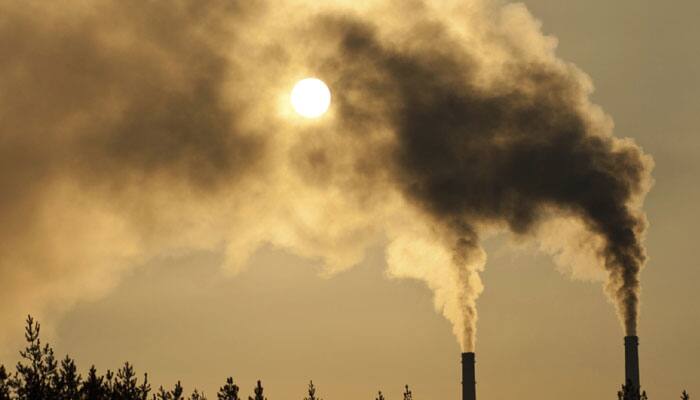Washington: A type of bacteria found at the bottom of the ocean could be used to neutralise large amounts of industrial carbon dioxide in the Earth's atmosphere, researchers, including one of Indian-origin, have found.
Carbon dioxide, a major contributor to the buildup of atmospheric greenhouse gases, can be captured and neutralised in a process known as sequestration.
Most atmospheric carbon dioxide is produced from fossil fuel combustion, a waste known as flue gas. But converting the carbon dioxide into a harmless compound requires a durable, heat-tolerant enzyme.
The bacterium, Thiomicrospira crunogena, studied by researchers from University of Florida, produces carbonic anhydrase, an enzyme that helps remove carbon dioxide in organisms.
The bacterium lives near hydrothermal vents, so the enzyme it produces is accustomed to high temperatures.
That is exactly what is needed for the enzyme to work during the process of reducing industrial carbon dioxide, said Robert McKenna, a professor at the the University of Florida College of Medicine.
"This little critter has evolved to deal with those extreme temperature and pressure problems. It has already adapted to some of the conditions it would face in an industrial setting," he said.
The enzyme, carbonic anhydrase, catalyses a chemical reaction between carbon dioxide and water.
The carbon dioxide interacts with the enzyme, converting the greenhouse gas into bicarbonate. The bicarbonate can then be further processed into products such as baking soda and chalk.
According to the UF researchers, which included graduate research assistants Brian Mahon and Avni Bhatt, in an industrial setting the carbonic anhydrase would be immobilised with solvent inside a reactor vessel that serves as a large purification column.
Flue gas would be passed through the solvent, with the carbonic anhydrase converting the carbon dioxide into bicarbonate.
Neutralising industrial quantities of carbon dioxide can require a significant amount of carbonic anhydrase, so researchers found a way to produce the enzyme without repeatedly harvesting it from the sea floor.
The enzyme can be produced in a laboratory using a genetically engineered version of the common E coli bacteria.
So far, the researchers have produced several milligrams of the carbonic anhydrase, though Bhatt said much larger quantities would be needed to neutralise carbon dioxide on an industrial scale.
There are many challenges to be overcome before the enzyme could be put to use against carbon dioxide in real-world settings. While it has good heat tolerance, the enzyme studied by the team is not particularly efficient.
The findings were published in the journals Acta Crystallographica D: Biological Crystallography and Chemical Engineering Science.
















